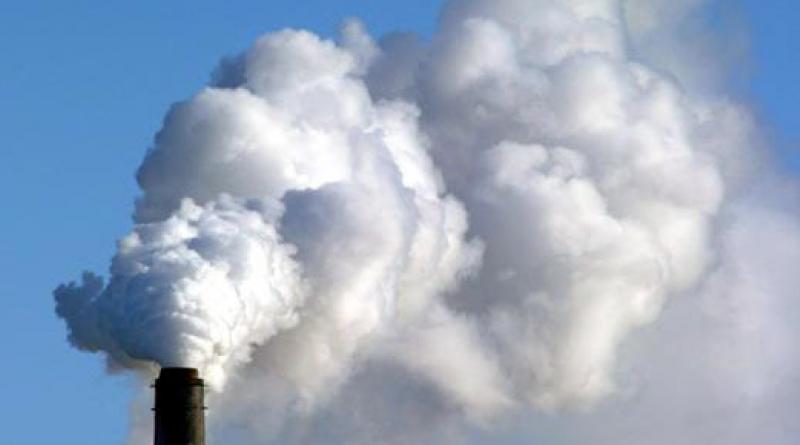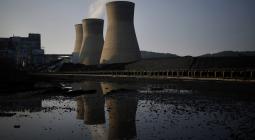Νέα μελέτη προειδοποιεί ότι η ανθρωπότητα εξάντλησε ήδη τον “ανθρακικό προϋπολογισμό” της ως το 2050 – Κανένα περιθώριο για νέα ορυκτά καύσιμα στο εξής.

Μια νέα επιστημονική έκθεση που δημοσιεύτηκε στο έγκυρο περιοδικό Nature προειδοποιεί ότι η ανθρωπότητα έχει ήδη εξαντλήσει τον “ανθρακικό προϋπολογισμό” της και η κατασκευή ενεργειακών υποδομών με ορυκτά καύσιμα πέραν των όσων έχουν υλοποιηθεί ή σχεδιαστεί ως τώρα οδηγεί σε σαφή εκτροχιασμό του κλιματικού στόχου του ΟΗΕ.
Ειδικότερα, οι συντάκτες της έκθεσης παρατηρούν ότι οι ανθρωπογενείς εκπομπές CO2 πρέπει να μηδενιστούν ως το 2050 προκειμένου να συγκρατηθεί η άνοδος της μέσης θερμοκρασίας στα επίπεδα που ζητά η συμφωνία του ΟΗΕ. Εντούτοις, η συνεχιζόμενη επέκταση της ενεργειακής υποδομής που χρησιμοποιεί ορυκτά καύσιμα υποδεικνύει ότι έχουν ήδη “κλειδώσει” οι συνεχιζόμενες εκπομπές CO2 στο μέλλον με ότι αυτό συνεπάγεται για τον παραπάνω στόχο.
Για τις ανάγκες της μελέτης χρησιμοποιήθηκαν στοιχεία από το 2018 για την ενέργεια, όπως και η διάρκεια ζωής των υφιστάμενων και σχεδιαζόμενων μονάδων ανά τον πλανήτη. Βάσει των παραπάνω, εκτιμάται ότι η υπάρχουσα υποδομή θα παράγει 658 γιγατόνους CO2 (226 έως 1.479 γιγατόνους αναλόγως της χρήσης και διάρκειας των μονάδων στην πράξη). Πάνω από τις μισές από αυτές τις εκπομπές προέρχονται από την ηλεκτροπαραγωγή, ενώ οι υποδομές στην Κίνα, τις ΗΠΑ και την Ε.Ε. αντιστοιχούν στο 41%, 9% και 7% του συνόλου αντίστοιχα.
Από εκεί και πέρα, οι ηλεκτροπαραγωγικοί σταθμοί υπό σχεδιασμό θα παράγουν άλλους 188 γιγατόνους (37-427) CO2. Το σύνολο των 658+188 γιγατόνων που ουσιαστικά έχουν “κλειδώσει” ήδη συνιστά παραπάνω από τον “ανθρακικό προϋπολογισμό” που διαθέτει η ανθρωπότητα προκειμένου να επιτύχει τον κλιματικό της στόχο (αύξηση θερμοκρασίας έως 1,5 βαθμό Κελσίου) με πιθανότητα 50-66%, όπως τονίζουν οι επιστήμονες.
Το αβίαστο συμπέρασμα είναι ότι ο ανθρώπινος πολιτισμός δεν έχει την πολυτέλεια για καμία απολύτως περαιτέρω επέκταση της ενεργειακής και βιομηχανικής παραγωγής με ορυκτά καύσιμα στο εξής. Επίσης, τονίζεται ότι πιθανώς θα χρειαστεί η πρώιμη απόσυρση αρκετών μονάδων ή η εφαρμογή τεχνολογιών δέσμευσης άνθρακα στη λειτουργία τους.
*του Χάρη Αποσπόρη
4 Ιουλίου 2019
energypress
Η έκθεση από το Νature: "Committed emissions from existing energy infrastructure jeopardize 1.5 °C climate target"
Abstract
"Net anthropogenic carbon dioxide (CO2) emissions must approach zero by mid-century (2050) to stabilize global mean temperature at the levels targeted by international efforts1–5. Yet continued expansion of fossil-fuel energy infrastructure implies already ‘committed’ future CO2emissions6–13. Here we use detailed datasets of current fossil-fuel-burning energy infrastructure in 2018 to estimate regional and sectoral patterns of ‘committed’ CO2 emissions, the sensitivity of such emissions to assumed operating lifetimes and schedules, and the economic value of associated infrastructure. We estimate that, if operated as historically, existing infrastructure will emit about 658 gigatonnes (Gt) of CO2 (ranging from 226 to 1,479 Gt CO2 depending on assumed lifetimes and utilization rates). More than half of these emissions are projected to come from the electricity sector, and infrastructure in China, the USA and the EU28 countries represent approximately 41 per cent, 9 per cent and 7 per cent of the total, respectively. If built, proposed power plants (planned, permitted or under construction) would emit approximately an additional 188 (range 37–427) Gt CO2. Committed emissions from existing and proposed energy infrastructure (about 846 Gt CO2) thus represent more than the entire remaining carbon budget if mean warming is to be limited to 1.5 °C with a probability of 50–66 per cent (420–580 Gt CO2)5, and perhaps two-thirds of the remaining carbon budget if mean warming is to be limited to below 2 °C (1,170–1,500 Gt CO2)5. The remaining carbon budget estimates are varied and nuanced14,15, depending on the climate target and the availability of large-scale negative emissions16. Nevertheless, our emission estimates suggest that little or no additional CO2-emitting infrastructure can be commissioned, and that infrastructure retirements that are earlier than historical ones (or retrofits with carbon capture and storage technology) may be necessary, in order to meet the Paris Agreement climate goals17. On the basis of the asset value per ton of committed emissions, we estimate that the most cost-effective premature infrastructure retirements will be in the electricity and industry sectors, if non-emitting alternative technologies are available and affordable4,18."




